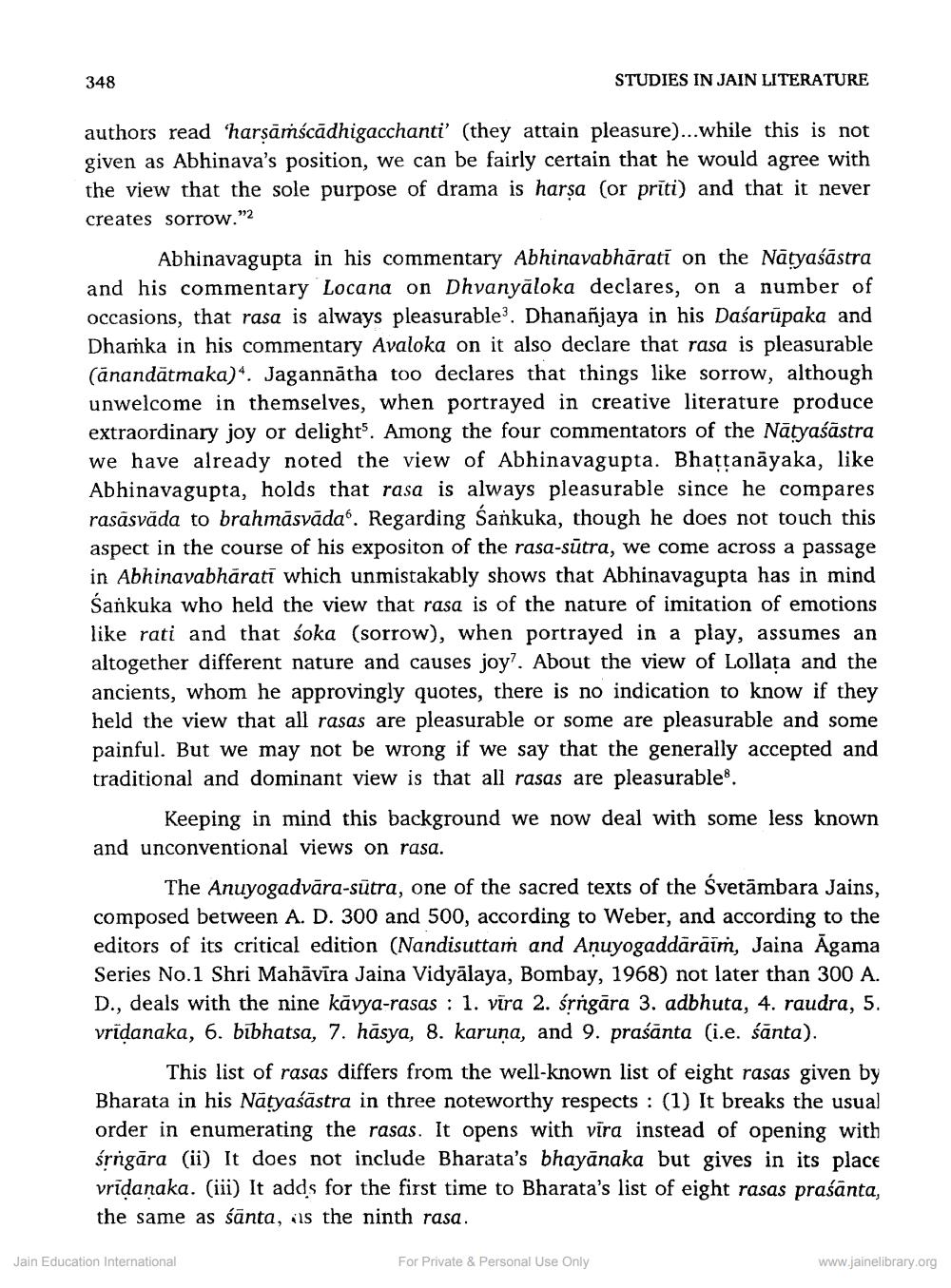________________ 348 STUDIES IN JAIN LITERATURE authors read harsamscadhigacchanti' (they attain pleasure)...while this is not given as Abhinavas position, we can be fairly certain that he would agree with the view that the sole purpose of drama is harsa (or priti) and that it never creates sorrow." Abhinavagupta in his commentary Abhinavabharati on the Natyasastra and his commentary Locana on Dhvanyaloka declares, on a number of occasions, that rasa is always pleasurable?. Dhananjaya in his Dasarupaka and Dhamka in his commentary Avaloka on it also declare that rasa is pleasurable (anandatmaka). Jagannatha too declares that things like sorrow, although unwelcome in themselves, when portrayed in creative literature produce extraordinary joy or delights. Among the four commentators of the Natyasastra we have already noted the view of Abhinavagupta. Bhattanayaka, like Abhinavagupta, holds that rasa is always pleasurable since he compares rasasvada to brahmasvadas. Regarding Sankuka, though he does not touch this aspect in the course of his expositon of the rasa-sutra, we come across a passage in Abhinavabharati which unmistakably shows that Abhinavagupta has in mind Sankuka who held the view that rasa is of the nature of imitation of emotions like rati and that soka (sorrow), when portrayed in a play, assumes an altogether different nature and causes joy?. About the view of Lollata and the ancients, whom he approvingly quotes, there is no indication to know if they held the view that all rasas are pleasurable or some are pleasurable and some painful. But we may not be wrong if we say that the generally accepted and traditional and dominant view is that all rasas are pleasurable8. Keeping in mind this background we now deal with some less known and unconventional views on rasa. The Anuyogadvara-sutra, one of the sacred texts of the Svetambara Jains, composed between A. D. 300 and 500, according to Weber, and according to the editors of its critical edition (Nandisuttam and Anuyogaddaraim, Jaina Agama Series No.1 Shri Mahavira Jaina Vidyalaya, Bombay, 1968) not later than 300 A. D., deals with the nine kavya-rasas : 1. vira 2. srngara 3. adbhuta, 4. raudra, 5. vridanaka, 6. bibhatsa, 7. hasya, 8. karuna, and 9. prasanta (i.e. santa). This list of rasas differs from the well-known list of eight rasas given by Bharata in his Natyasastra in three noteworthy respects : (1) It breaks the usual order in enumerating the rasas. It opens with vira instead of opening with srngara (ii) It does not include Bharata's bhayanaka but gives in its place vridanaka. (iii) It adds for the first time to Bharata's list of eight rasas prasanta, the same as santa, is the ninth rasa. Jain Education International For Private & Personal Use Only www.jainelibrary.org




